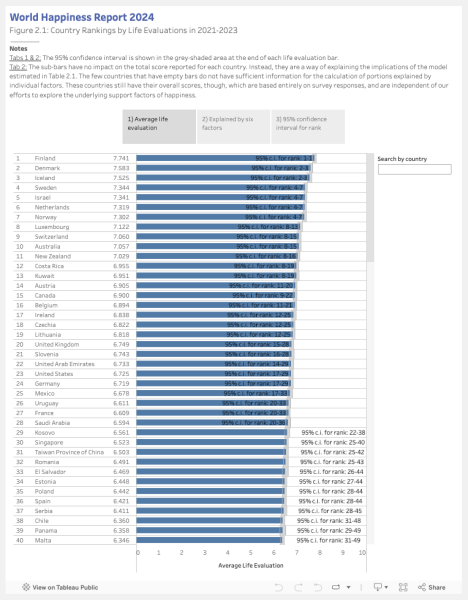The 2024 World Happiness Report, released recently, continues to demonstrate changes in well-being for people all over the world.
The WHR attempts to show the happiness level of residents in every participating country. “The Cantril Ladder asks respondents to think of a ladder, with the best possible life for them being a 10 and the worst possible life being a 0,” according to the World Happiness Report’s About page. “They are then asked to rate their own current lives on that 0 to 10 scale.”
For the first time since the WHR was first conducted in 2012, the U.S. has fallen out of the top 20, with countries such as Czechia and Lithuania rising into the top 20.
The WHR also presents interesting correlations between happiness and age. In the U.S., happiness for the younger population has sharply decreased over the years, resulting in the older population being happier than the young, which is not a common occurrence around the world.
For the seventh year in a row, Finland is the happiness capital of the world, with the average happiness score being 7.7 among residents, the highest on Earth. This seems to be a pattern among all Nordic countries, as Norway, Denmark, and Sweden all have scores of 7.3 and above, resulting in all four countries being in the top seven happiest countries in the world.
Why are these countries so happy? Many point to the feeling of unity or cohesion in the community, equality of economy, and a government that offers high levels of services. These seem like things that many U.S. citizens would have access to; however, divisive topics splitting the country apart, continued increases in prices, and other pressing debates have led to a drop in America’s happiness levels.














